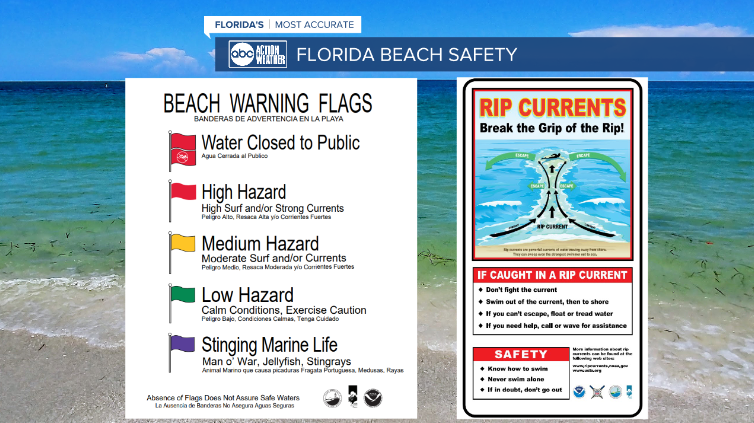TAMPA, Fla. — Rip currents lead to more than 100 drowning deaths every year in the U.S., according to the National Weather Service.
At least 11 people have died in less than two weeks along the Gulf Coast due to rip currents, according to CNN.

Florida News
Former NFL quarterback Ryan Mallett dies in apparent drowning in Florida at 35
According to the United States Lifesaving Association, rip currents are channelized currents of water flowing away from shore at surf beaches. Surf beaches are any beaches with breaking waves, the National Weather Service said.
Rip currents typically form at breaks in sandbars and near structures such as jetties and piers, the United States Lifesaving Association said.
2021 RipCurrentBasics Final by ABC Action News on Scribd
Rip currents are dangerous because they pull people away from shore, and speeds can change from moment to moment. The United States Lifesaving Association said rip currents account for more than 80% of rescues performed by lifeguards at surf beaches.
If you're caught in a rip current, NWS says to do the following:
- Relax — Rip currents don't pull you under.
- A rip current is a natural treadmill that travels an average speed of one to two feet per second but has been measured as fast as eight feet per second; that's faster than an Olympic swimmer. Do not attempt to swim against the rip; it will only use up the energy you need to survive and escape.
- Do NOT try to swim directly into shore. Swim parallel along the shoreline until you escape the current's pull. When free from the pull of the current, swim at an angle away from the current toward shore.
- If you feel you can't reach shore, relax, face the shore, and call or wave for help. Remember: If in doubt, don't go out!
- If at all possible, only swim at beaches with lifeguards.
- If you choose to swim on beaches without a lifeguard, never swim alone. Take a friend and have that person take a cell phone so he or she can call 911 for help.

RELATED:
- Lakeland father dies after rescuing son and friends from rip current
- Local family hopes their tragic story warns others about dangerous rip currents
Rip currents can be hard to spot, but look for the following clues:
- A channel of churning, choppy water
- A color change in a particular area
- A line of seaweed, foam or debris moving gradually toward the sea
- A break in the incoming wave pattern

The United States Lifesaving Association says to always assume there are rip currents at surf beaches and take the time to evaluate the water before you get in.
Remember to always check beach conditions before you go. Mote Marine Lab & Aquarium has this beach condition reporting system you can use.



